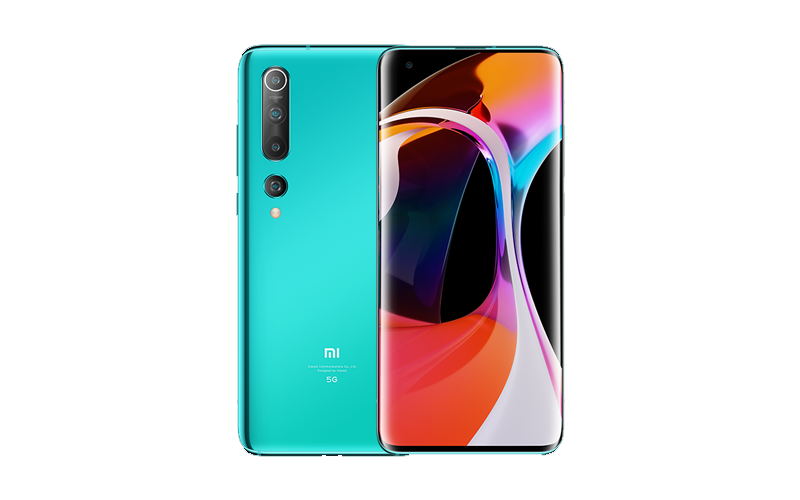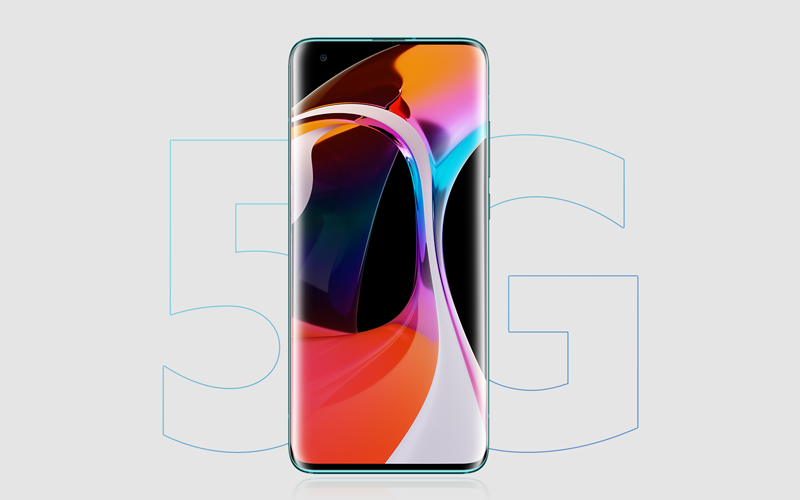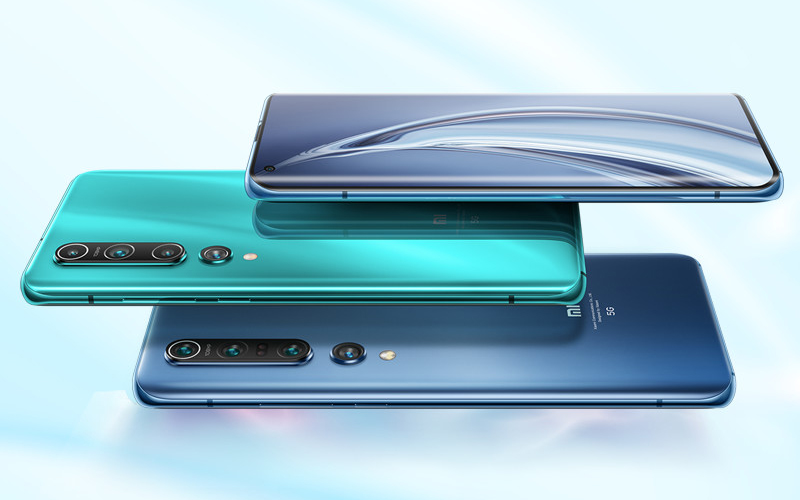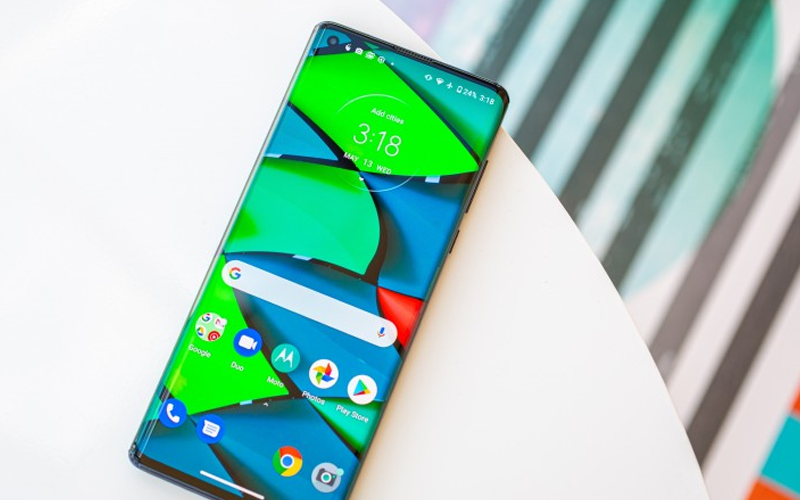SPECIFICATIONS
- Display6.67 inches
- Rear Camera108 MP/13 MP/2 MP/2 MP
- Front Camera20 MP
- ProcessorQualcomm Snapdragon 865
- Resolution1080 x 2340
- RAM8GB/12GB
- Operating SystemAndroid 10
- Storage128GB/256GB
- Battery4780 mAh
- WaterproofYes
- Dual SimYes
- Quick ChargingYes
DESIGN
There is a great deal to adore about the plan of the Mi 10. It’s the all around refined “glass sandwich” structured, total with the entirety of its advantages and downsides. The equivalent goes for the inexorably mainstream bended presentation. It is sheltered to state that on the off chance that you discover the Mi 10 Pro engaging, at that point a similar will likewise be valid for the vanilla form also. Since the two are indistinguishable. We can just expect that spares Xiaomi a portion of the assembling costs. Furthermore, we truly can’t state we mind at all since the structure being referred to is an in vogue and extraordinary looking one. Additionally, case chasing for the Mi 10 ought to be somewhat simpler – Pro or vanilla – both work.

Anyway, with the Mi 10, you get a bended sheet of Gorilla Glass 5 on the two sides. Nothing excessively forceful or excessively steep as far as points. The back board expands somewhat further up than the sides of the showcase go down, which is fairly unfavorable to evenness. All things considered, it’s the correct methodology, since a forcefully flooding show frequently prompts contact and palm dismissal issues, just as control settles. There is none of that on the Mi 10. The center metal edge is still wide enough to oblige both a conventional volume rocker and a force button. Both ergonomically situated on the right-hand side.
The general form of the Mi 10 feels extremely strong, with basically no flex at all. Gorilla Glass 5 gives enough true serenity most definitely, however, we would even now suggest a case on the off chance that you are somewhat ungainly. Possibly, a screen defender, also. In any case, even the individuals who do take additional great consideration of their handset could most likely profit by a case since the matte completion on the rear of the Mi 10 is a genuine oil magnet. It is likewise tricky. In contrast to the Pro, which just goes ahead White and Gray, the normal Mi 10 offers much more shading assortment.
What we have nearby is the Twilight Gray, which can go in looks unfathomably from metallic to pale blue and even somewhat green, contingent upon light and edge. Coral Green and Peach Gold are conceivably much more outwardly satisfying. To such an extent, that it could be somewhat difficult to cover them up with a case. On the other hand, the camera module on the Mi 10 juts a lot – all of which compeling purposes behind snapping a case on the back.
Indeed, even with its extra elusive nature, the Xiaomi Mi 10 fits cozily and safely close by, with the metal edge entirely formed to give a tad of additional grasp. We do need to call attention to that the 13MP ultrawide camera – the last one in the camera roll, sits a piece excessively low. Hope to chance upon it with a forefinger much of the time.
Much the same as the Mi 10 Pro, the vanilla variant has a customary control format. Biometric verification is taken care of by a phenomenal optical under-show unique mark module. It’s both smart and dependable.
There is no status or warning LED. Xiaomi anticipates that its AOD alternatives should supplant that. Obviously, we know it’s not something very similar, and AOD comes with its own punishment. However, recognition for a job well done, the majority of the visuals and livelinesss, similar to the one during charging are extraordinarily cleaned.
The speaker circumstance is somewhat unique and not carefully regular on the Mi 10. At the top edge, on the front, there is a minuscule traditional earpiece. Much the same as its greater sibling, the Mi 10 has a couple of sound system speakers. One on the top side and another at the base. Since the Mi 10 Pro set the bar really high with its sound system speaker execution, you are likely thinking about how the vanilla piles up.
DISPLAY
Probably the best thing about the Xiaomi Mi 10 is that it gets the great board of its greater sibling. It is a 6.67-inch, Super AMOLED unit, which can stand its own as far as quality contrasted with the opposition.

Tragically, it’s just FullHD+ in goals (2,340 x 1,080 px). Be that as it may, that despite everything works out to a totally sharp 386ppi, or something like that. We think that its more than sufficient at this screen size. Furthermore, the lower goals improves power proficiency. However, in truth, on an OLED, not all that much.
The other potential purpose of investigation for the Mi 10’s board is the 90Hz invigorate rate. While it is as yet incredible to have anything above 60Hz, current leaders are as of now increasing current standards to 120Hz.
Beginning with our regular brilliance test, we can see that the Mi 10 5G stands its ground at a good 522 nits. At the point when confronted with a splendid light, it arrived at the astounding 854 nits. This is unquestionably a leader grade execution.
The ‘First Color’ mode brought about the most precise hues, contrasted with the DCI-P3 shading space. It restored a normal deltaE of simply 1.7 and a maximum of 3, which is viewed as a totally aligned showcase.
Past these three fundamental presents, the Color plot menu in settings additionally has warm and cool presets, a custom white point dial and an Advanced area with four more shading range presets and the entirety of the individual sliders your heart wants. Such a large number of alternatives that these are totally overpowering.
For painstakingness, we carried out some further testing utilizing the shading extent presets in the Advanced area and we were unable to get as great outcomes as with the “First Color,” so we would think about these a needless excess for ordinary clients, and we simply made a note to give Xiaomi additional focuses for adaptability in this division.
Back to this present reality at that point and progressively unmistakable things clients can really acknowledge – simply like its Pro kin, the normal Mi 10 is ensured for HDR10+ and spreads Widevine L1 DRM. Which means, you can appreciate all the HDR content, at most extreme goals from any gushing help you need and really have an incredible encounter at the same time. It really is a shocking board. We didn’t generally say much regarding the 90Hz part of it yet. Peruse on in the battery segment, since Xiaomi’s specific usage merits some acclaim.
PERFORMANCE
The Snapdragon 865 holds little astonishments and normally guarantees top current-gen execution. Since the vanilla Mi 10 offers both the body and the chipset being referred to with the Pro, we have just tried, we likewise have little motivation to stress over the genuine presentation of the chip. With the 865 you get a sum of eight centers: 1×2.84 GHz Kryo 585 Gold (Cortex-A77 subsidiary) and 3×2.42 GHz Kryo 585 Gold (Cortex-A77 subordinate) and 4×1.8 GHz Kryo 585 Silver (Cortex-A55 subsidiary). An Adreno 650 is additionally part of the bundle and about at least somewhat great GPU execution at this moment.

Much the same as the Mi 10 Pro, you can get the vanilla Mi 10 with either 8GB or 12GB of quick LPDDR5 RAM. Capacity alternatives incorporate 128GB and 256GB (we have a 8GB/256GB unit for testing). There is no 512GB level on the vanilla Mi 10, while the Pro gets one, with constrained accessibility. The capacity is likewise smart, authoritatively promoted as UFS 3.0. However, evaluated by AnTuTu’s speed tests to come nearer to UFS 3.1.
Concerning a rundown of the presentation you can anticipate from the Xiaomi Mi 10, the ends are basic and clear: It is a genuine 2020 monster, up there with the best leads as of now available. It, obviously, stays aware of its Pro kin, too. And keeping in mind that it additionally shares a portion of the equivalent somewhat raised surface temperature issues, those never truly influenced genuine execution. Slap a case on for additional close by comfort and basically consider it surface cooling, important to continue extraordinary execution from the fit Snapdragon 865.
BATTERY
The Mi 10 Pro didn’t generally hold back on the battery office with its 4,500 mAh pack. The vanilla Mi 10 figured out how to pack a much greater 4780 mAh battery inside a similar body. We can just envision this is because of some space reserve funds from things like the minimized camera arrangement. By and by, we welcome it.

We’ll bounce directly to the continuance numbers. The fundamental arrangement of scores is with the presentation running at its local 90Hz.
Taking a gander at the Mi 10 Pro for correlation, as our nearest perspective, we locate a quite steady arrangement of results. Xiaomi has kept things rather overall quite unsurprising, with a couple of moments of talk time and around 40 hours of reserve extra, stood to the vanilla Mi 10, because of its marginally greater battery. The web perusing and video playback figures on the Mi 10 additionally both see a predictable and slight knock up, contrasted with the Pro.
With the expansion in high revive rate board fame, the subject of dynamic invigorate rate alterations is turning out to be increasingly significant. What’s more, it bodes well provided that you think about it, bringing down the screen revive rate when 90Hz isn’t required rations both framework assets and battery.
We’ve built up our own product device to monitor the current framerate while utilizing the telephone in different undertakings and we have been watching endlessly unique conduct from one Android maker to the next.
By its vibes, MIUI gives off an impression of being depending on application id recognizable proof to choose whether it should run an application at 60Hz or utilize the full 90Hz and it likes to decide in favor of alert importance it brings down the invigorate rate just in certain know applications.
What this implies, practically speaking, is that when we have the Mi 10 in 90Hz mode and afterward open explicit applications, as YouTube, Netflix or the default framework video player, it consequently changes to 60Hz, without the client ever taking note. Different producers, as OnePlus appear to utilize much more brilliant stunts for this programmed exchanging, such as recognizing any full-screen video player, which despite everything permits the UI in applications like YouTube to be rendered at high revive rate. This doesn’t mean MIUI’s methodology is better or more awful – it’s only unique such that is important.
CAMERA
We’ll attempt to put forth a valiant effort to concentrate on the encouraging points here, despite the fact that there is no genuine method of overlooking the realities. In particular, that Xiaomi centered its downsizes for the Mi 10 on the camera division. A reality that stings extensively since the Mi 10 Pro has such an extraordinary and flexible camera arrangement. Despite the thinking, what will be will be.
Before we get into conversations of genuine photograph and video quality, we should list precisely what the Mi 10 needs to work with in the camera division, what has changed, contrasted with the Pro and what is still there.
The primary 108MP snapper has been persisted from the Mi 10 Pro, for the most part unaltered. The main thing that it is by all accounts missing is the Laser self-adjust, agreeing to only PDAF.
The 108MP module Xiaomi picked and how it is utilizing it on the Mi 10 deserves some explanation, however. What we are taking a gander at here is a Samsung Bright S5KHMX ISOCELL 1/1.33, 0.80 µm sensor, situated behind a f/1.69 focal point. It has a detailed central length of 24mm.
This all sounds enigmatically suggestive of the 108MP snapper of the S20 Ultra. Be that as it may, there is a key distinction in shading channel arrangements between the two and the manner in which they consolidate pixel information. The Ultra has a marginally unique HM1 variation of the sensor, complete with Nonacell innovation (9-in-1 pixel binning). Interestingly, the Mi 10 and Mi 10 Pro have a Tetracell (4-in-1 pixel binning) channel. The equivalent goes for the Mi Note 10. However, it is critical that while the Mi Note 10 creates numerically stable 108/4 = 27MP stills, while the Mi 10 and Mi 10 Pro end up with 25MP ones. Maybe there is some extra editing done to lighten some edge flaws – we can’t be certain.
Sadly, that is about the main piece of the Mi 10 Pro’s camera arrangement that Xiaomi left unblemished for the vanilla Mi 10. It gets no committed fax snapper, rather depending on a yield from the principle camera for zooming.
Without a doubt, there is a committed ultra-wide edge camera on the Mi 10. It is both lower-res and dimmer than the one on the Pro, sitting at 13MP and f/2.4. In any case, it takes into account some additional piece of flexibility in shots, so we’ll take it.
Same goes for the 2MP, f/2.4 committed full scale camera. Maybe, it would have been somewhat pointless if the ultrawide wasn’t fixed-center. Since that isn’t the situation, it is a clever expansion, with unquestionably its goals standing apart as the most restricting element. That aside, it really has self-adjust and figures out how to go in outrageously near subjects.
At long last, the 2MP, F/2.4 profundity sensor finishes the essential four camera check to populate a comparable looking camera cluster to the one on the Mi 10 Pro. It’s there to help with picture shots. That’s it, not much. Goodness, and one final little detail – the Triple-LED double tone streak on the Mi 10 Pro has been traded for a Dual-LED module on the customary Mi 10.
Last, yet not least, there is a completely flushed-out Pro mode in the camera application. White offset accompanies four presets to look over, just as a manual choice. Gap is a reenacted incentive somewhere in the range of zero and 100. Shade speed goes from 1/4000, right to 30 seconds. ISO has a scope of 50 to 6400. What’s more, you gain admittance to any of the three fundamental cameras from the LENS menu, just as 108MP mode on the primary camera. There’s additionally a center topping switch up top, just as a metering mode selector.
SOFTWARE
While in fact MIUI 12 has as of late become official and is currently a thing, the Mi 10 doesn’t dispatch with it out-of-the-crate. The following adaptation of Xiaomi’s well known Android flavor was simply reported, and is yet to show up on any telephone. It may even now be some time before that occurs. Mi 10 gadget proprietors can most likely hope to be among the first to get the update, also. Additionally, the progressions MIUI 12 presents aren’t too uncommon in any case. Presumably since MIUI is as of now in an extremely, cleaned state, the way things are.

Level and straightforward plan is certainly a common topic around the whole UI. Be that as it may, that effortlessness is as yet the aftereffect of many structure cycles and unobtrusive changes and choices. The measure of clean truly radiates through in seemingly insignificant details, for example, bends, unobtrusive activity outlines, including snap-back, speed and drag impacts. This degree of clean is kept pretty reliably all through the UI, which is most likely why little blemishes, for example, the absence of thought for separating around the selfie camera punch opening will in general stand-apart to us more.
Security-wise, the Mi 10 gets a decision among face and unique finger impression open, as biometrics. Like we previously referenced, the unique finger impression peruser is current-gen and works extraordinary, Both smart and solid. Same goes for the facial acknowledgment. We likewise welcome the additional tender loving care Xiaomi put into the visual parts of opening. There are a lot of unique mark peruser livelinesss to browse. Even better, there are a few unique mark peruser based alternate routes you can arrangement for some additional accommodation.
The Mi 10 Pro backings Always in plain view, and you can plan it or leave it on/off constantly. MIUI 11 has a huge amount of subjects you can look over and make it yours. You can redo may of those. The AOD additionally bolsters breathing light – the bended edges of the presentation will streak with hues upon new warnings.
To the extent general format goes, you get a lot of decent additional items, similar to a fast alternate routes sheet to one side of the lock screen, where you can organize your Mi Device IR and IoT contraptions and machines for control and furthermore flip the spotlight.
Once more, we can see the off application, not so much getting along with Dark mode. Not a significant grievance, however. At last, it is important that our Global MIUI ROM included no advertisements anyplace in the UI. This probably won’t be valid for certain Chinese branches, however. We aren’t actually certain how things remain on that front right now.
As we previously referenced on various events, the chipset is one of the numerous basic bits, shared between the Mi 10 Pro and the vanilla rendition. It is the present lead alternative of decision – the Snapdragon 865, complete with the X55 modem and Sub6 5G network. To be progressively specific, still, you get 1, 3, 7, 28, 77, 78 groups in the Global adaptation and 1, 3, 41, 78, 79 SA/NSA groups in Chinese Mi 10 units.
Should I Buy It?
Folding our heads over the Mi 10 in the entirety of its viewpoints was, to be perfectly honest, no simple errand. Also, we’re not really discussing all the progressed 2020 fancy odds and ends it brings to the table, nor the complexities that accompany its cutting edge variety of cameras and high revive rate show.
Maybe, because of the dynamic idea of the market, yet in addition, apparently, through Xiaomi’s choices, the vanilla Mi 10 winds up in a kind of an extreme spot.
We get the thought on paper. Put out a no-bargain, all out lead notwithstanding the Mi 10 Pro 5G, at that point make sense of an approach to dial things back a piece, with the goal that an increasingly reasonable variant can be sold in more noteworthy numbers at a lower sticker price. Strong thinking, all around. It’s imaginable a similar technique that presented to us the Oppo Find X2 Pro and the vanilla Find X2.
One significant issue right away emerges from such an arrangement however – picking what to chop down in making your less expensive gadget. Xiaomi went for the camera arrangement with the Mi 10, viably disposing of one of the significant attractions of the Mi 10 Pro.
Maybe, this reade-off is worth $200 for many individuals. Be that as it may, nothing occurs in disconnection in the versatile market. Particularly not in 2020. Indeed, even without looking farther than Xiaomi’s own lineup, the camera-downsized Mi 10 doesn’t sparkle in examinations.








